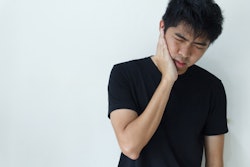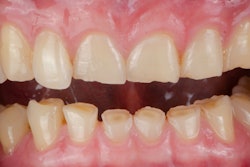Time spent on social media may be linked to oral behaviors like tooth clenching, gum chewing, and lip and object biting, which are strong contributing factors to temporomandibular disorders (TMDs). The study was published in the Journal of Oral Rehabilitation.
However, spending time on social media did not appear to affect jaw muscle contractions and movements, the authors wrote.
“Given the substantial amount of time individuals spend on social media—often replacing direct social interactions—this area of research warrants further investigation,” wrote the authors, led by Pedram Mouseli of the Centre for Multimodal Sensorimotor and Pain Research with the University of Toronto Faculty of Dentistry in Canada (J Oral Rehabil, June 20, 2025).
The connection between using social media and stress appears to be bidirectional, since social media use can trigger stress. Additionally, social media use has been reported to modulate the release of dopamine, which helps regulate jaw motor activity. Given these relationships, frequent social media use may contribute to more oral behaviors and ultimately raise a patient’s risk of developing a TMD, according to the study.
To explore the effect social media use has on jaw motor activity, 30 healthy patients completed an online survey assessing their screen habits and oral behaviors using the oral behavior checklist (OBC). Then they completed an in-person experimental session involving 30 minutes of silent reading, using social media, and watching a documentary.
During these tasks, electromyographic (EMG) activity of the right masseter was measured. Oral behaviors were identified as events with an EMG amplitude exceeding 10% of the individuals' maximum voluntary contraction that lasted two seconds or more, according to the study.
For the participants, the mean ± standard deviation (SD) daily social media use was 154 ± 73 minutes on weekdays, and it increased to 185 ± 85 minutes on the weekends (p < 0.001).
Time spent on social media was a noteworthy but weak indicator of oral behavior scores (B = 0.042, SE = 0.014, t = 3.009; 95% confidence interval, 0.014 to 0.070; p = 0.004), they wrote.
Nevertheless, the study had limitations. Objective physiological measures of stress, like heart rate, which may have offered more precise insights into the patients' stress responses, were not collected, the authors wrote.
“Our study demonstrated a modest association between social media use and OBs in a sample drawn from the general adult population,” Mouseli and colleagues wrote.




















